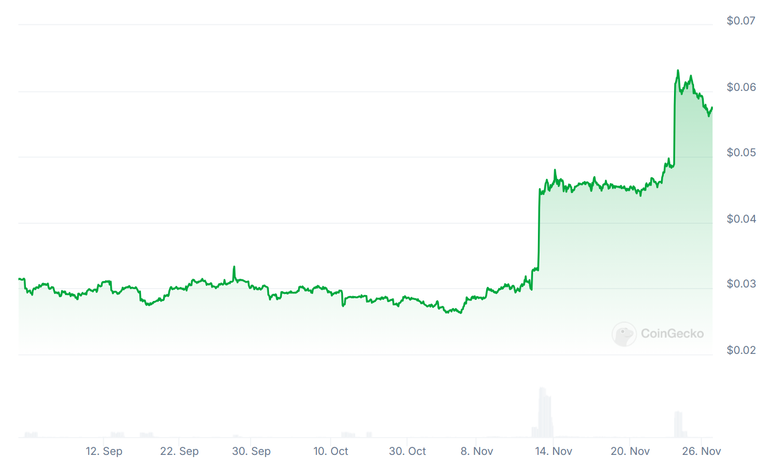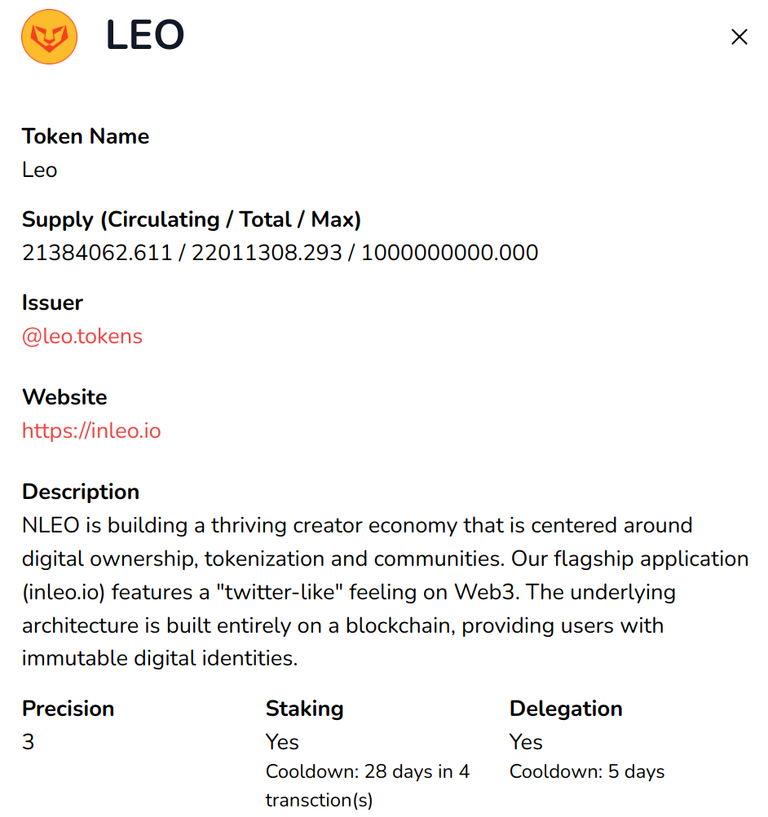Better Understanding The LEO Token And The Hive-Engine Platform
One of the benefits of participating in the InLeo ecosystem, rather than Medium or Twitter, is that you will directly earn money (in the form of cryptocurrency) for your contributions to the network.
Writing, commenting, and curating content on InLeo will earn you rewards not only in $HIVE, $HBD (Hive Backed Dollars), and $LEO, but also now in $DASH, with other cryptocurrencies planned for integration in the future.

LEO 1 Month Price Chart - Source
In a previous article, we discussed how inflation and rewards are distributed on Hive and InLeo. In this post, we will dive a little deeper into the origins of the LEO token itself, and on which blockchain(s) it resides.
Hive-Engine
Unlike Ethereum, which was designed to natively support token issuance via its ERC20 token standard, the Hive blockchain only supports HIVE and HBD by default. In other words, the minting of community tokens isn't directly possible on the Hive blockchain.
Never discouraged, the Hive community launched an interoperable sidechain called the Hive-Engine in order to allow the various Hive communities to create and trade their own tokens.
For example, we have DEC (dark energy crystals) and SPS (splintershards) for Splinterlands, LEO for InLeo, and a myriad of other tokens that have been created for other "tribes".

Token Creation
Community-run nodes (similar to Hive witnesses) earn BEE tokens for validating transactions on the Hive-Engine blockchain. These tokens can then be bought and sold on Hive-Engine's exchange.
Using a service like TribalDEX, any user with sufficient BEE tokens (100, at this time) can create a token on Hive-Engine, and integrate it with a community on the Hive blockchain.
Token properties such as maximum supply, description, website, and whether or not it will have staking and delegation functionality are set by the issuer when the token is minted. Here are the details of the LEO token:

Note that although the maximum supply shows as 1000000000 in this screenshot, LEO inflation will actually reach zero when 50 million tokens have been issued.
The LEO Token
Having read up to this point, it should now make sense that while the HIVE and HBD you earn via InLeo are issued to you on the Hive blockchain, the LEO tokens you earn are actually issued on the Hive-Engine sidechain.
As a matter of fact, if you are logged into Hive-Engine's website, you can see the LEO tokens that have been issued to you from the history page. This is a combination of rewards for delegating HIVE to leo.voter, along with content creation and curation rewards.

Multi-Chain LEO
The InLeo team have built a few bridges that you can use to transfer your LEO tokens from the Hive-Engine to other major blockchains such as Ethereum, Binance Smart Chain, and Polygon.
After migrating to these blockchains LEO becomes "wrapped", allowing you to trade it on decentralized exchanges (DEXs) that have more liquidity. The bridges work both ways, so you can transfer your wrapped LEO tokens back to their native form on Hive (Hive-Engine) as well.
Considerations
Although Hive-Engine offers handy features like smart contracts and token creation, the fact that LEO is issued on a separate platform introduces an additional point of failure.
For example, if there are technical issues with Hive-Engine, things like bridging or token issuance may stop working temporarily.
Another interesting point is that, unlike smart contracts on Ethereum and Solana, which can be upgraded/altered by the creator, the ones on Hive-Engine seem to be set in stone, at least according to discussions I found on their Discord.
For example, if you mint a token with a max supply of 1,000,000, and then later decide that it should have been set to 1,000,000,000, there is no way to change that. I think many of us would agree that this is a feature, and not a bug!
Until next time...
If you learned something new from this article, be sure to check out my other posts on crypto and finance here on the HIVE blockchain. You can also follow me on InLeo for more frequent updates.
Further Reading
- Better Understanding the Hive Curation Reward System
- The Difference Between Hive Power and VESTS, and How "Interest" Payments Work
Resources
InLeo Docs [1]
Hive-Engine FAQ [2]
LEO (bLEO) price chart [3]
